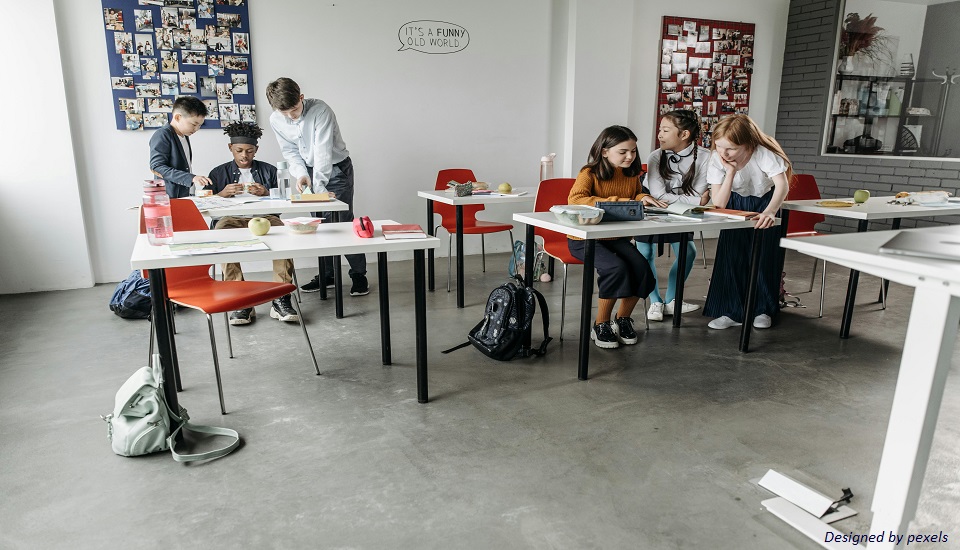4 Classroom Behaviour Clues Every Administrator Should Know And What They Mean!
29th March 2024

Do you know 32% of public-school teachers have agreed that student’s misbehaviour has interfered with the flow of their teaching?
It’s every school leader's responsibility to make sure to provide required training from time to time to their teaching staff so that they can become capable of dealing with student’s different emotions and behaviour to create a safe and productive learning environment.
However, in reality, very few school leaders consider giving their teachers the required training to understand their student’s behaviour.
If you are seeking to be a more responsible school leader and want to help your teaching staff to understand with different behaviour of students, then we have got you covered.
In this blog post, we will be sharing some of the evident four clues to understanding student’s functions of behaviours and the reason behind them, and how they can deal with them to create a productive classroom environment.
Before moving to the topic, can we ask you a question? Do you follow us on Social Media? We regularly share upgraded educational content, tips, feedback, and more. Check us out by clicking the profiles here - Facebook / Twitter / LinkedIn / Pinterest / Instagram / YouTube
So, without any further delay, let’s get started.
What are the Functions of Behaviours?
Every behaviour has a function. If a student is repeating a similar kind of behaviour, then it serves a function or purpose for them. If the function or purpose is lacking then the individual will not show the behaviour over time.
However, the difficulty in recognizing the function of behaviour may vary and behaviour can also have more than one function.
Let’s get to know the four major four functions of behaviours in detail.
4 Major Functions of Behaviour
1. Avoidance/Escape Function
Students might want to avoid or escape any difficult situation or avoid doing any difficult task, socializing activities, or any task that they think is unpleasant to do by showing disruptive behaviours.
Example- Students might avoid doing homework which may seem to be an unpleasant task to them.
2. Access To Certain Objects/Items Function
Students might behave in a manner to gain access to their desired objects or items.
Example- Students might show tantrums until and unless they get their desired toys.
3. Attention Seeking Function
Students may be involved in a behaviour by which they want to seek attention either from their peers, or any adults around them.
Example- Students might wave their hands to gain attention from their peers.
4. Sensory/Automatic Function
Students might be engaging in a certain kind of behaviour to make them feel in a certain manner(feelings). The function depends on the individual if they want to add something pleasing or displeasing and not rely on any external situation.
Example- Students might cover their ears with their hands in the room where loud music is playing to protect themselves from uneasy feelings from loud music.
Learn how to tackle the challenging behaviour of children here:
How To Determine a Student’s Function of a Behaviour?
It’s not an easy task for any teacher or even school leader to understand students’ behaviours and what has triggered them. However, by constantly learning and observing you will get to recognize the certain pattern of a particular behaviour and its trigger or at least you will know that something’s bothering students or they get triggered by certain situations.
There are two types of triggers that might be the reason behind student’s behaviours:
Fast Trigger
The fast trigger happens just before the student shows any kind of behaviour.
For example- If someone takes away their toys, they get angry.
If a teacher tells them to stop playing, they get sad or angry.
Slow Triggers
The slow trigger might happen before students show any kind of behaviour or even it could be the cause of behaviour.
For example- A student might have watched a clown in a circus last week and during art class, he/she might get scarred by seeing a prop that reminded them of that clown and they run away.
How To Handle Students After Determining The Function of Behaviour?
To respond according to the different sets of behaviours of students is not an easy task to master. What may work today might not work tomorrow. Sometimes, it might take more than a week to figure out an effective strategy to deal with student’s different behaviours.
However, one of the effective ways to deal with it, is you must focus on “responding rather than reacting.” This might sound confusing, but in simple words, you must need to be empathetic and put yourself in their shoes while responding and never try to argue or get angry while you are responding to them.
“Treat them with patience and empathy” is the key.
Consider Training Your Teacher To Respond Student’s Behaviour Aptly
To handle student’s various behaviours in the classroom is not an easy task for every teacher. However, as a responsible school leader, you must provide the necessary training to your teaching staff by understanding the above-mentioned four functions of behaviours and how to deal with them to create a productive and safe learning environment for students.
If you also want to learn various effective and latest leadership methods then consider pursuing courses like Online Educational Administration & Management courses, where you will get assistance from top expert trainers who will also help you to become one of the successful school leaders.
We believe education should be accessible for everyone. That’s why we don’t charge for our blogs. Find the right course that will help you in your career with us, contact us at - 1800–212–6400. You can mail us at act@asiancollegeofteachers.com.
Written By : Abhishek











